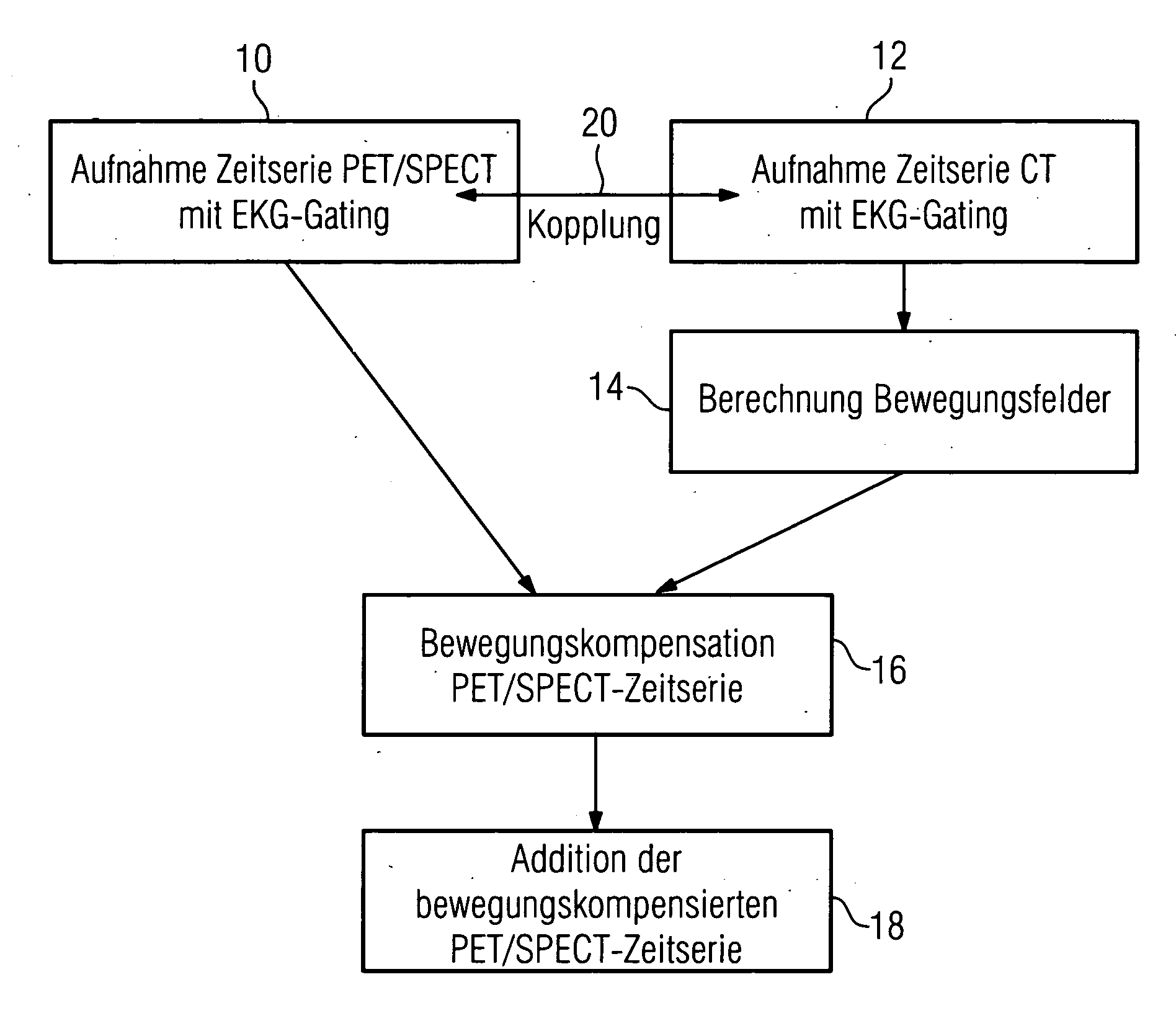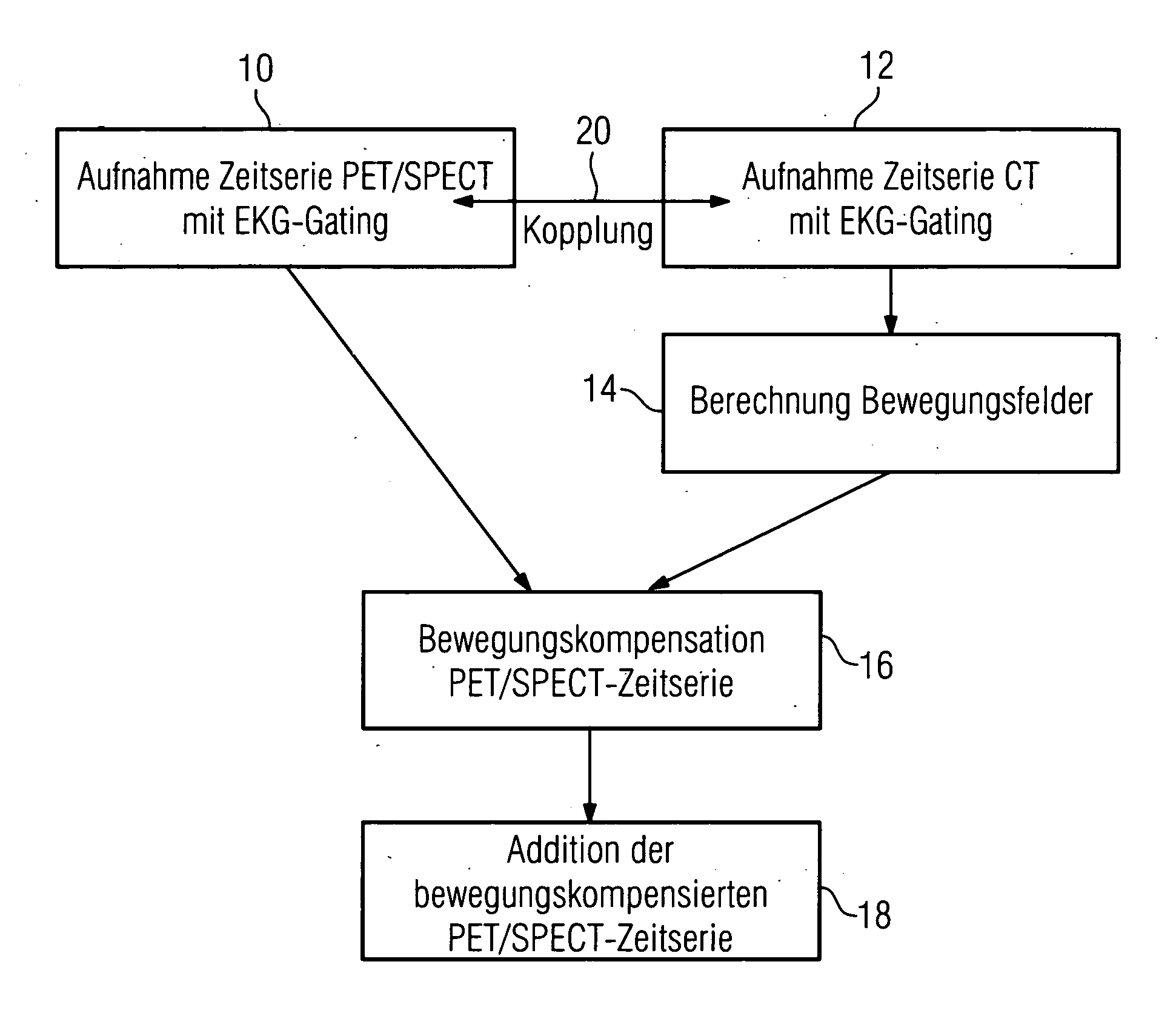Method for movement-compensation in imaging
a technology of movement compensation and imaging, applied in the field of movement compensation in imaging, can solve the problems and reducing the number of events measured per individual image. , to achieve the effect of reducing the number of events measured per individual image and reducing the diagnostic value of images
- Summary
- Abstract
- Description
- Claims
- Application Information
AI Technical Summary
Benefits of technology
Problems solved by technology
Method used
Image
Examples
Embodiment Construction
[0024] In the preferred embodiment of the invention, a person's heart is being investigated. A combined PET-CT-System or SPECT-CT-system is used, wherein both the parts of the system are mechanically connected to each other, su ch that the images that are generated with the PET part of the system can be directly correlated with the CT images.
[0025] Furthermore, the option of carrying out ECG gating is available, that is, ECG probes can be attached to the patient, and an image evaluation analyses the ECG signal that has been recorded. The ECG signal is divided into a plurality of intervals, each interval corresponding to a specific image from a time series. The system now records image data and, at the same time, the ECG curve. On the basis of the interval in which the heart is located during the recording of the image data, the image data are assigned in the respective interval and in the respective partial image from the time series of image s. Finally a time series of three-dimen...
PUM
 Login to View More
Login to View More Abstract
Description
Claims
Application Information
 Login to View More
Login to View More - R&D
- Intellectual Property
- Life Sciences
- Materials
- Tech Scout
- Unparalleled Data Quality
- Higher Quality Content
- 60% Fewer Hallucinations
Browse by: Latest US Patents, China's latest patents, Technical Efficacy Thesaurus, Application Domain, Technology Topic, Popular Technical Reports.
© 2025 PatSnap. All rights reserved.Legal|Privacy policy|Modern Slavery Act Transparency Statement|Sitemap|About US| Contact US: help@patsnap.com


